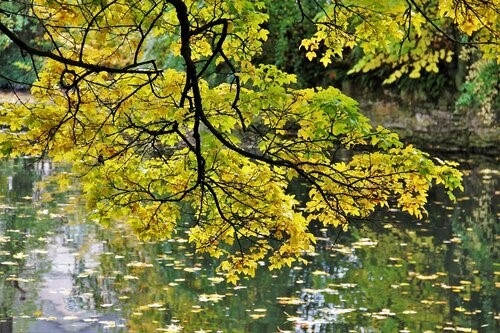Management of riverside trees is extremely important as they are a key component of rivers, providing shelter, nutrients and controlling light levels.
Managing trees alongside rivers also creates a more aesthetically pleasing channel, improving riverside walks and connection to the river.
The Importance of Light
Light levels are crucial along a river channel, influencing the success of plant and animal species throughout the river.
Plant species in particular need high light levels to ensure their survival, especially aquatic plants which lack sunlight in general.
In newly introduced in-channel works, such as berm creation, high light levels are extremely important to establish plant species implemented on the berms, leading to the success or failure of the new works.
The perfect conditions, created by well-managed riparian trees, is a mix of dappled light and shade, providing enough sunlight for marginal plants to colonize but keeping temperatures in the river optimum for fish and in-channel species.
This type of riparian management will leave some tree cover, stabilise the river banks and reducing the possibility of bare banks by promoting ground and aquatic plant growth. Protecting the river bank from erosion and increasing productivity of the stream, as tree cover provides nutrients and leaf litter to the river.

Tree Management along a river channel, coppicing trees and introducing woody material at Little Ponton.

Falling leaves, providing nutrients into the river.
The levels of light can be increased through a variety of tree management techniques such as pollarding and coppicing.
If trees get too big and fall over or become a danger they have to be removed altogether. Therefore, tree management benefits trees as it will prolong the life of mature trees, managing them before they get too big and have to be removed.
Through effectively managing trees, enabling mature trees to be retained, bat and bird species benefit through the preservation of their habitat as they forage, nest and roost in them.
The Presence of Woody Material in the River
Woody debris can be introduced in the river in a number of ways. One of which is to hinge trees into the river, either forming the toes of berms or being attached parallel to the river bank, preventing bank erosion. They also create a more sinuous, narrow river channel, especially in times of lower flow.
The introduction of woody material is hugely beneficial in a river, providing excellent habitat for a variety of species, including fish. Its presence slows the flow of water, helping to form still pools, which fish species can then use for spawning.
Woody material also helps support the whole ecological river system as it traps organic matter, therefore increasing food supply at the bottom of the food chain.
Woody material installation will be carried out sensitively to ensure no increase to flood risk locally in the area.

Falling tree that will need to be removed before it falls and blocks the river, becoming a flood risk.






